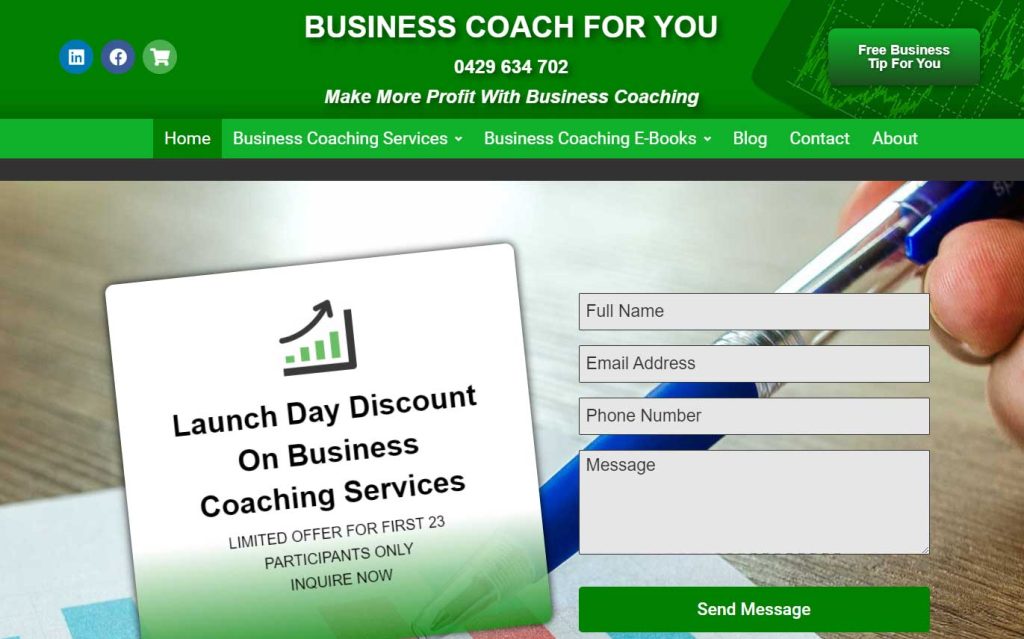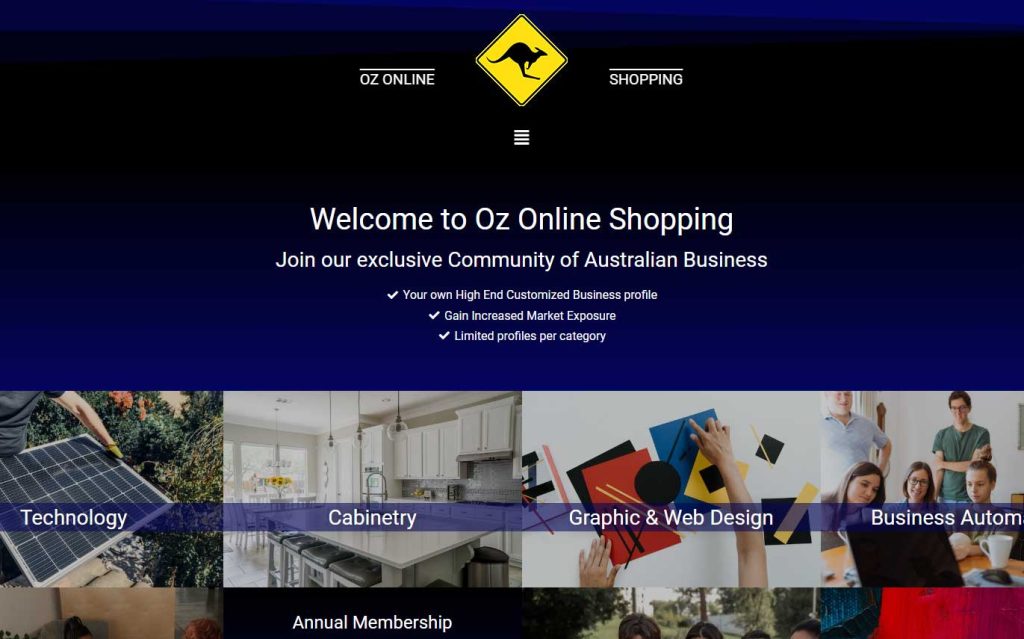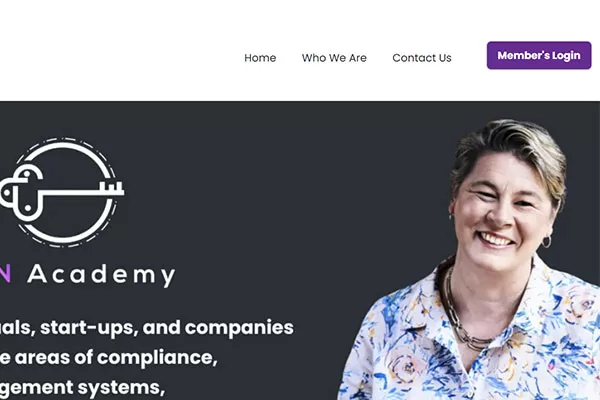Thank you Carol for becoming a customer. Loved creating your new website, Carol is a qualified accountant and passionate business coach based in Bundaberg. Her new website is both presentation of her coaching business and an online shop selling her courses. Integrated with Social Media we are currently helping Carol with running her linked in campaign and her on website blog.
https://businesscoachforyou.com.au/
When designing a business website for Australian business coaches, it’s important to consider the following elements to create an effective and professional online presence:
- Clear and Engaging Messaging: Clearly communicate the value and benefits of the coaching services offered. Use compelling headlines, concise descriptions, and engaging content to capture the attention of potential clients and convey the unique selling points of the coaching practice.
- Professional Branding: Create a visually appealing website that reflects the coach’s branding and professionalism. Use a consistent color scheme, logo, and typography that align with the coach’s brand identity. A clean and modern design will help establish credibility and trust.
- Services and Expertise: Clearly outline the coaching services provided and highlight the coach’s areas of expertise. Use separate pages or sections to describe each service in detail, including the benefits and outcomes clients can expect. Testimonials from satisfied clients can also be included to showcase success stories.
- Client Success Stories: Share case studies or success stories that demonstrate the coach’s effectiveness. Highlight the specific challenges faced by clients and how the coaching process helped them overcome those challenges and achieve their goals. This builds trust and confidence in the coach’s abilities.
- Call-to-Action (CTA): Include prominent and strategically placed CTAs throughout the website to encourage visitors to take action. For example, CTAs can invite visitors to schedule a consultation, sign up for a coaching program, or download a free resource. Make sure the CTAs stand out visually and clearly communicate the desired action.
- About the Coach: Create an “About” page that introduces the coach and their background, qualifications, and experience. Personalize the page with a professional photo and share the coach’s story and passion for coaching. This helps potential clients connect on a personal level and understand the coach’s approach.
- Blog or Resources Section: Include a blog or resources section where the coach can share valuable insights, tips, and advice related to business coaching. This not only positions the coach as an expert in their field but also helps with search engine optimization (SEO) and drives organic traffic to the website.
- Contact Information: Ensure that contact information, such as a phone number and email address, is easily accessible on every page. Including a contact form can also make it convenient for visitors to reach out for inquiries or consultations.
- Mobile-Friendly Design: Optimize the website for mobile devices, as a significant portion of website traffic comes from mobile users. A responsive design ensures that the website looks and functions well on smartphones and tablets.
- Test and Optimize: Regularly review website analytics to understand visitor behavior, identify areas for improvement, and optimize the website accordingly. Monitor conversion rates, page loading speed, and user engagement to enhance the overall user experience.
Remember that a well-designed and user-friendly website is crucial for attracting and engaging potential clients. It should effectively communicate the coach’s expertise, build trust, and provide a seamless experience for visitors to take the next steps toward engaging the coach’s services.


